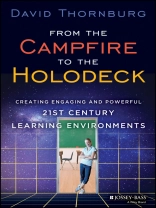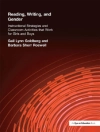How to optimize educational spaces and teaching practices for more effective learning
Author David Thornburg, an award-winning futurist and educational consultant, maintains that in order to engage all students, learning institutions should offer a balance of Campfire spaces (home of the lecture), Watering Holes (home to conversations between peers), Caves (places for quiet reflection), and Life (places where students can apply what they’ve learned). In order to effectively use technology in the classroom, prepare students for future careers, and incorporate project-based learning, all teachers should be moving from acting as the ‘sage on the stage’ to becoming the ‘guide on the side.’
Whether you are a school administrator interested in redesigning your school or a teacher who wants to prepare better lessons, From the Campfire to the Holodeck can help by providing insight on how to:
* Boost student engagement
* Enable project-based learning
* Incorporate technology into the classroom
* Encourage student-led learning
From the Campfire to the Holodeck is designed to help schools move from traditional lecture halls (Campfires) where students just receive information to schools that encourage immersive student-centered learning experiences (Holodecks).
Tabela de Conteúdo
Foreword Prakash Nair vii
About the Author xiii
Acknowledgments xv
Introduction xvii
1 The Problem with Traditional Classrooms 1
2 Campfires 11
3 Watering Holes 17
4 Caves 23
5 Life 31
6 The Challenge of Technology 37
7 Technological Campfires 51
8 Technological Watering Holes 65
9 Technological Caves 77
10 Technological Life Spaces 85
11 Learning on the Holodeck 105
Notes 127
Index 133
Sobre o autor
David Thornburg is an award-winning futurist, author, and consultant and the head of the Thornburg Center, a group that focuses on emerging technologies and their impact on learning. In addition to his work with technology, David also consults on the relationship between classroom design and learning.
Visit his blog at thornburgthoughts.wordpress.com.












